
Photo of Industrial Solar Plant ~ Courtesy of Basin and Range Watch
The Obama Administration recently released their proposed Budget for the BLM, which includes a whopping $75.7 million dollars for the BLMs Wild Horse and Burro Program with an additional request of $42.5 million to purchase land for ONE wild horse preserve related to Secretary Salazar’s new vision for the future of America’s herds - despite having approximately 680,000,000 acres of land currently under federal control.
On July 9, 2008, Congressional Representative’s Nick Rahall, Chairman of the Committee on Natural Resources and Raul Grijalva, Chairman of the Subcommittee on National Parks, Forests and Public Lands, sent a Letter to BLM regarding their management of the Wild Horse and Burro Program. In it, they stated, “You may be aware that the BLM’s inability to administer the budget of the Wild Horse and Burro Program with any trace of fiscal accountability is a long standing concern…”
In that letter, Representatives Rahall and Grijalva also asked,
“It has been reported that over 19 million acres of land, on which wild horses and burros existed at the time of the passage of the Wild Free-Roaming Horse and Burro Act in 1971, is no longer available for wild horses. Is this figure accurate? If so, what is the justification for terminating wild horse and burro use of these lands?”
“Why has the BLM not reintroduced wildhorses/burros to lands that previously were available to the animals in 1971, which have subsequently been closed to their use?”
Yes, what about the land that has “disappeared”….
The Government Accountability Office (GAO) was suppose to include an answer to where all the land went in their report released in November 2008 but apparently, the question of acreage was too daunting for the GAO to try to sort out, so they deferred it to BLM to answer.
BLM was suppose to release a report in March of 2009 but that deadline came and went. In June of 2009, the BLM presented a “draft” report to the National Wild Horse and Burro Advisory Board that included “lump sum” explanations of where all the acreage disappeared too under such headings as, “Resource conflicts” or “Unsuitable Habitat” or “Other Reasons” but nobody has seen, nor is anybody asking BLM to actually provide a full accounting of what this really means.
Real answers to the question of “lost acreage” seems to have melted into the background while Salazar is busy sticking his tin cup out to the American taxpayer to compensate for land and herds stolen from the public.
The Clark Mountain Burros
The Clark Mountain burros were one of the oldest and most unique wild burro herds in America. Living in relative isolation for four centuries, their genetic tests revealed the herd had a “high proportion of rare variants” based on genetic tests performed by leading geneticts Dr. Gus Cothrane at the behest of the National Wild Horse & Burro Program on wild herds across the West.
The Clark Mountain burros were one of the oldest and most unique wild burro herds in America. Living in relative isolation for four centuries, their genetic tests revealed the herd had a “high proportion of rare variants” based on genetic tests performed by leading geneticts Dr. Gus Cothrane at the behest of the National Wild Horse & Burro Program on wild herds across the West.

One of the last remaining Clark Mountain Burros
Courtesy of Basin and Range Watch ~ May 2009
Courtesy of Basin and Range Watch ~ May 2009
In 1994, with the passage of the California Desert Protection Act (CDPA), the burros only perennial water source was transferred to National Park Service (NPS), also now managed under Secretary Salazar, through the creation of the Mojave National Preserve. NPS then issued a General Management Plan declaring a zero burro management policy for the Clark Mountain wild burros.
On September 20, 2005, California Senator Feinstein, author of the California Desert Protection Act, issued a Letter to then Secretary of the Interior Gale Norton, which stated, “…a population of wild burros should be maintained within the Mojave National Preserve’s boundaries” and “I want to be on record as expressing my support for maintaining a viable and self-sustaining population of these wild burros in the Mojave National Preserve and I oppose any efforts to remove such a population.”
No records can be found to determine if BLM and NPS tried to work it out by developing a Memorandum of Understanding (MOU), a common management tool used so that both agencies may fulfill their respective mission - but we can see the seeds being laid for the future of the burros in the Desert Managers Group California Desert Interagency Burro Strategy signed in 1999.
So far, no evidence can be found indicating NPS ever considered Senator Feinstein’s request to preserve and protect the Clark Mountain burros found within the Mojave National Preserve but we can see their stance here in this NPS E-mail Response in 2006 addressing public concerns about removals and rumored shootings of wild burros in the Preserve, where 3,022 burros had already been removed just between 1997 and 2003. Click Here to learn more.
In 2002, then BLM California State Director Mike Pool (now Deputy Director of the entire BLM) signed the Record of Decision for the Northern and Eastern Mojave Desert Management Plan (NEMO) that zeroed the Clark Mountain burros out.
During the planning process of NEMO, BLM presented five Alternative management options, four of which proposed to continue to manage the Clark Mountain burros. These Alternatives included such options as adjusting the AMLs upwards, supplying alternative water sources, modifying existing HMA boundaries to preserve and protect both wild burros and desert tortoise and initiating a five year carrying capacity range analysis.
Despite having many alternatives available to continue “managing” the burros, Director Pool signed off on the decision to zero them out. The only question that seems to remain is which heading BLM's "Lost Land Explanation Team" now includes the Clark Mountain “unsuitable” Herd Area acreage under.
Desert Tortoise
In the Environmental Assessment (CA-690-EA04-27) issued by the Needles Field Office in December 2006, authorizing the final removals for the Clark Mountain burros through 2012, BLM attempted to imply that the total elimination of all wild burros within the Clark Mountain Herd Area was required to protect Desert Tortoise within the Ivanpah area.
With respect to noted impacts by wild burros to desert tortoise, no data, viable information or studies were done within the Clark Mountain area regarding either their impacts to rangeland health or their affects on desert tortoise whatsoever.
In 2005, U.S Geological Survey (USGS) issued a report titled, “Threats to Desert Tortoise Populations: A Critical Review of the Literature”. Only one paragraph was included regarding wild horses and/or burros impacts on the threatened desert tortoise found on page 57. Here is the exact conclusion presented by USGS within that analysis; “Wild burro and tortoise ranges overlap in some places, but the overlap is quite low in the West Mojave. No published studies were found that investigated the impact burros or horses (neither of which are native to North America) have on tortoise populations. The primary effect is likely to be habitat alteration through soil compaction and vegetation change. Burro populations are probably not extensive enough in most areas to pose a major threat to tortoise populations, but this is speculative.”
On June 1, 2009, California State Wild Horse and Burro Lead Amy Dumas reported a remaining population of approximately 60 wild burros within the Clark Mountain area (per.communication via email) but numerous reports from the public state there are less than 20 wild burros actually left after the BLM removed over 100 in January 2007.
The Ivanpah Solar Plant
As the Obama Administration, Secretary Salazar and such heavy hitters such as T.Boone Pickens are pushing a Fast Track and selling the American public on their “green, renewable energy” agenda while turning a blind eye to all the former wild horse and burro habitat these projects need in order to come to fruition, it's beoming more and more apparent it's not just land these guys are after anymore.
On September 20, 2005, California Senator Feinstein, author of the California Desert Protection Act, issued a Letter to then Secretary of the Interior Gale Norton, which stated, “…a population of wild burros should be maintained within the Mojave National Preserve’s boundaries” and “I want to be on record as expressing my support for maintaining a viable and self-sustaining population of these wild burros in the Mojave National Preserve and I oppose any efforts to remove such a population.”
No records can be found to determine if BLM and NPS tried to work it out by developing a Memorandum of Understanding (MOU), a common management tool used so that both agencies may fulfill their respective mission - but we can see the seeds being laid for the future of the burros in the Desert Managers Group California Desert Interagency Burro Strategy signed in 1999.
So far, no evidence can be found indicating NPS ever considered Senator Feinstein’s request to preserve and protect the Clark Mountain burros found within the Mojave National Preserve but we can see their stance here in this NPS E-mail Response in 2006 addressing public concerns about removals and rumored shootings of wild burros in the Preserve, where 3,022 burros had already been removed just between 1997 and 2003. Click Here to learn more.
In 2002, then BLM California State Director Mike Pool (now Deputy Director of the entire BLM) signed the Record of Decision for the Northern and Eastern Mojave Desert Management Plan (NEMO) that zeroed the Clark Mountain burros out.
During the planning process of NEMO, BLM presented five Alternative management options, four of which proposed to continue to manage the Clark Mountain burros. These Alternatives included such options as adjusting the AMLs upwards, supplying alternative water sources, modifying existing HMA boundaries to preserve and protect both wild burros and desert tortoise and initiating a five year carrying capacity range analysis.
Despite having many alternatives available to continue “managing” the burros, Director Pool signed off on the decision to zero them out. The only question that seems to remain is which heading BLM's "Lost Land Explanation Team" now includes the Clark Mountain “unsuitable” Herd Area acreage under.
Desert Tortoise
In the Environmental Assessment (CA-690-EA04-27) issued by the Needles Field Office in December 2006, authorizing the final removals for the Clark Mountain burros through 2012, BLM attempted to imply that the total elimination of all wild burros within the Clark Mountain Herd Area was required to protect Desert Tortoise within the Ivanpah area.
With respect to noted impacts by wild burros to desert tortoise, no data, viable information or studies were done within the Clark Mountain area regarding either their impacts to rangeland health or their affects on desert tortoise whatsoever.
In 2005, U.S Geological Survey (USGS) issued a report titled, “Threats to Desert Tortoise Populations: A Critical Review of the Literature”. Only one paragraph was included regarding wild horses and/or burros impacts on the threatened desert tortoise found on page 57. Here is the exact conclusion presented by USGS within that analysis; “Wild burro and tortoise ranges overlap in some places, but the overlap is quite low in the West Mojave. No published studies were found that investigated the impact burros or horses (neither of which are native to North America) have on tortoise populations. The primary effect is likely to be habitat alteration through soil compaction and vegetation change. Burro populations are probably not extensive enough in most areas to pose a major threat to tortoise populations, but this is speculative.”
On June 1, 2009, California State Wild Horse and Burro Lead Amy Dumas reported a remaining population of approximately 60 wild burros within the Clark Mountain area (per.communication via email) but numerous reports from the public state there are less than 20 wild burros actually left after the BLM removed over 100 in January 2007.
The Ivanpah Solar Plant
As the Obama Administration, Secretary Salazar and such heavy hitters such as T.Boone Pickens are pushing a Fast Track and selling the American public on their “green, renewable energy” agenda while turning a blind eye to all the former wild horse and burro habitat these projects need in order to come to fruition, it's beoming more and more apparent it's not just land these guys are after anymore.
With a megalithic public resource grab swinging into full gear, the last of our Nation’s vast resources are headed to the chopping block for international consumption by the corporate interests funding these resource grabs and partnering with our “public officials”.
It’s not just the land, it’s everything the land contains and for those of us who live in the Southwest, what really sticks out is, the water these industrial tycoons are going to suck dry and lock up from the people – forever!
"We are humbled by America’s bounty. We are humbled because the richness of our lands has enabled our Nation-time and again-to renew itself….repower itself…and reinvent itself for new challenges and opportunities.”
Interior Secretary, Ken Salazar
February 1, 2010
February 1, 2010

Water drop at Lake Mead, Nevada ~ Courtesy of National Park Service
To illustrate this point, here is what is going to happen with just ONE solar plant out of hundreds currently being “fast tracked” by BLM in the former home of the Clark Mountain burros.
Basin and Range Watch (BRW) has provided extensive research and coverage of what the Ivanpah Solar Plant really means. Rather than work first to set up solar panels and plates on homes and business in already developed places like Las Vegas located just 35 miles away, this so called “green” technology will set up shop directly adjacent to the Ivanpah Desert Tortoise Critical Area of Environmental Concern (ACEC) that the Clark Mountain burros were supposedly zeroed out to protect.
According to BRW, here is what the public ~ and the tortoises ~ can expect.
First, it will take five months to scrape the desert floor to clear all existing plants and animals from the initial 4,000 acres to get it started. Initially, 214,000 helistat mirrors will be set up in three rings that will aim sunlight at boilers located at centralized 459-foot towers. This will later blossom to a projected total of 318,000 mirrors and 5 rings. Herbicides would then be regularly sprayed across the landscape to “keep weeds down” (or anything else that tries to grow!)
During construction, the Ivanpah Solar Project will require an estimated 99,333 gallons per day of water for Ivanpah Plants 1 and 2 and 194,000 gallons per day for Ivanpah 3, with up to an additional 47,000 gallons used during pipeline hydrotesting. This would be about 76 to 149 acre-feet per year.
Additional water needs are projected for washing the mirrors that could result in an additional 50 acre-feet of ground water per year during grading of the soil and after that, a routine operation of washing the mirrors every two weeks will need about 100 acre-feet per year. The preliminary proposal also states, “over the next 50 years, the use of the….groundwater is expected to increase and, along with that increased use, the overdraft in the basin is expected to become greater. The project’s pumping of groundwater alone would contribute to this overdraft…”
Administrative and maintenance buildings, a warehouse, detention ponds, and a small sewage system will be built on site as well as “small amounts of hazardous wastes produced that contain mercury, lead, cadmium, copper, and other substances…”
The company in charge of this monstrocity, Bright Source, wants a total of 10,500 acres of public land and raised more than $160 million dollars from investors such as Google.org. - but will need millions more to complete the project.
The Ivanpah site sits right across the valley from the Bighorn Generating Station, a 598-megawatt natural gas-fired plant, because the Ivanpah Solar Plant will also need natural gas in order to keep the start-up boilers warm during cloudy days. This will require a new 5.3-mile long pipeline connecting to the Kern River Gas Transport line.
Part of the proposal demands that ALL tortoises will have to be “re-located” from approximately 4,000 acres of the project. The projected “normal” mortality rate of 15% for “translocated tortoises” is being used but a recent Fort Irwin translocation operation suggests even higher mortality rates are probable; BRW projects mortality rates may be closer to 50%.
Right now, the BLM Needles Field Office has prepared a Draft Environmental Impact Statement and is still accepting public comments on the proposed Ivanpah Industrial Solar Plant.
As part of this process, a joint analysis between BLM and the Energy Commission released in 2008, regarding the impacts of the proposed Ivanpah Electric Generating System to the handful of remaining Clark Mountain burros was prepared titled, "Wild Horses and Burros". Click Here to view.

To view a copy of the Draft EIS, Click Here
Public Comments on the Ivanpah proposal are due by:
Thursday
February 11, 2010
~Contact Information~
George Mackfessel
Planning and Environmental Coordinator
Bureau of Land Management
Needles Field Office
1303 South U.S. Highway 95
Needles, CA 92363
Phone: (760) 326-7000
Fax: (760) 326-7099 Att: George Mackfessel
E-mail: ca690@ca.blm.gov
Also, please be aware that submitting information for this proposal including personally identifying information such as your name and contact information may become part of the public record. While you may request that BLM withhold this information, they may not be able to guarantee privacy in all instances.

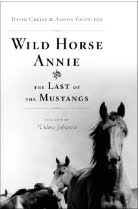








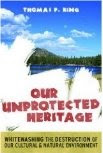



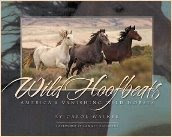




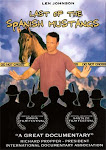





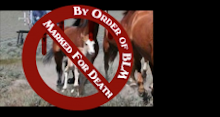
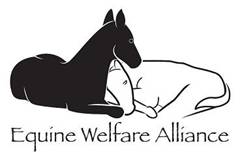
5 comments:
Thanks for doing the research and posting this. It is all unfortunately starting to make more and more sense. More proof of the role that energy and natural resources is playing to eradicate both wild horses and all other wildlife. There has to be a balance, but the government is far from it.
All this mega-renewable energy sprawl on BLM lands is just part of the next big speculation bubble.
Look who is invested in this:
ttp://www.nytimes.com/gwire/2009/09/08/08greenwire-rfk-jr-enviros-clash-over-mojave-solar-proposa-98645.html?pagewanted=all
Bobby Kennedy Jr. Makes you wonder about Ah-nold and Maria Shriver and the reckless renewables policies. Instead of rooftop solar, all the big money is on the speculation casino of public lands that Ken Salazar is turning over to them. Bright Source and other fast-track renewables are angling for tax dollars too to subsidize the destruction of the Mojave. And the same is happening with mega-wind farms in the Great Basin, too where Harry Reid's buddies are involved - like in the Eagle HMA.
All right everyone - FIGHT!
You people are all ridiculous! What the hell do you want? You are the same kind of people who have bitched for years about pollution and the effects of our carbon footprint, or the effects of pipelines that carry crude oil on the "natural habitat"! Guess what, there are 32 million acres of land in the Mojave desert! life will go on, the burros and horses will make it, they aren't some rare and delicate animals, they live in the freaking desert! and as far as the turtles, studies suggest that the Ivanpah project would impact less than 25 desert tortoises, so worst case scenario 12 would die based on the worst projected mortality rate of relocation of the tortoises... 12 tortoises for 400 megawats of clean power.... screw it right? we'll just deal with the smog over LA that contributes to the death of hundreds of the elderly and people with lung disorders every year........
What the People want is REAL renewable energy, NOT corporate takeover of their Public Lands.
What the People want is their Wild Horses & Burros back on their Legal Herd Management Areas where they belong
Post a Comment